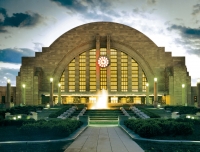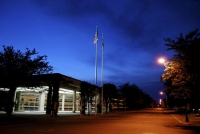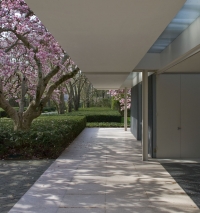Art Deco in Cincinnati: Union Terminal and Carew Tower
Fri, Mar 02, 2012A tale of two buildings, and an Art Deco heritage that almost didn�t happen in Cincinnati.
If you were to glance at an original 1929 sketch of Cincinnati�s Union Terminal, a masterpiece of Art Deco architecture and one of the last great train stations built in America, you�d be confused. That�s because the building was originally envisioned as neoclassical. �The sketches were almost gothic looking, and the design was thought to be cold,� says Scott Gampfer, director of the library and historic collections at the Cincinnati Museum Center. �The Cincinnati Union Terminal Company and the Cincinnati Public Works Department were not entirely satisfied with the look that was presented. They wanted to project the idea of modernity,� he says.




